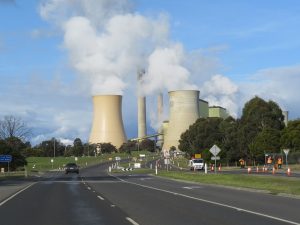Whatever the question, the excuse is always “climate change” and the answer is always Wind and Solar.
Are you an Energy Minister? Did you stop drilling for gas, let teenage girls design your national grid, and rely on a hostile power to supply your fuel? Stupid you, but that’s OK, because if your reliable grid is failing, it’s not your fault, it’s “climate change”. See how this works? It’s not that you vandalized a highly engineered system with frivolous vanity projects but that you didn’t do enough of them.
Heatwaves are apparently wrecking coal plants now. That extra one degree outdoors makes all the difference to a turbine that runs 24 hours a day at 540 degrees C. If only we’d known? Or maybe we did. In 1962 we could build coal plants in Arizona that are still running, and gas plants (in 1959) in Yuma County where the average maximum is 45C (115F) for three months of the year.
Seems the engineers had hot weather sorted out 60 years ago.
The lamest excuse for grid failure yet
Is it gas-lighting, or just stupid?
How the climate crisis is threatening power supply stability
Paul Brown at The Guardian
Extreme weather events – high winds, heatwaves, freezing rain, and loss of glaciers and snow pack mean once reliable sources of power can fail.
It’s not that socialist policies to drive out reliable power have succeeded and 50 year old equipment is being neglected and not replaced. No…
Clearly children are not doing enough tours of nuclear plants and coal turbines. They grow up to be journalists for The Guardian that think rainy, windy days can slow these industrial giants down.
The World Meteorological Organization (WMO) says 87% of global electricity comes from nuclear, hydro and thermal fossil fuel plants that rely on water for cooling, and up to a third of these are in high water stress areas. Predicting droughts, stream flows and water availability is therefore vital for maintaining supply.
For solar and wind, where water is less of an issue, predicting wind strength and sunshine hours is key. In countries with highly variable weather, such as the UK, this is still a work in progress, although improving all the time. Partly, these problems can be mitigated by giant batteries and well-tried technologies, such as pump storage, where water is pumped back uphill at night for hydro-power production at peak times.
Batteries? Someone needs to tell the petals at The Guardian that extreme heat can drastically shorten the life of batteries and solar panels perform worse as the temperature rises.
REFERENCES
[1] Anagnostopoulos, G. G., D. Koutsoyiannis, A. Christofides, A. Efstratiadis, and N. Mamassis, (2010). A comparison of local and aggregated climate model outputs with observed data’, Hydrological Sciences Journal, 55: 7, 1094 — 1110 [PDF]
[2] Koutsoyiannis, D., Efstratiadis, A., Mamassis, N. & Christofides, A.(2008) On the credibility of climate predictions. Hydrol. Sci. J. 53(4), 671–684. changes [PDF]
[3] Paltridge, G., Arking, A., Pook, M., 2009. Trends in middle- and upper-level tropospheric humidity from NCEP reanalysis data. Theoretical and Applied Climatology, Volume 98, Numbers 3-4, pp. 351-35). [PDF]
[4] Sheffield, Wood & Roderick (2012) Little change in global drought over the past 60 years, Letter Nature, vol 491, 437
